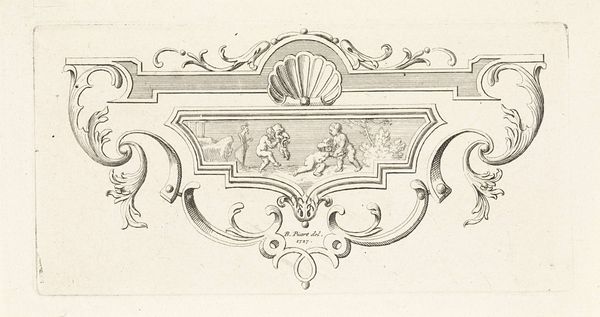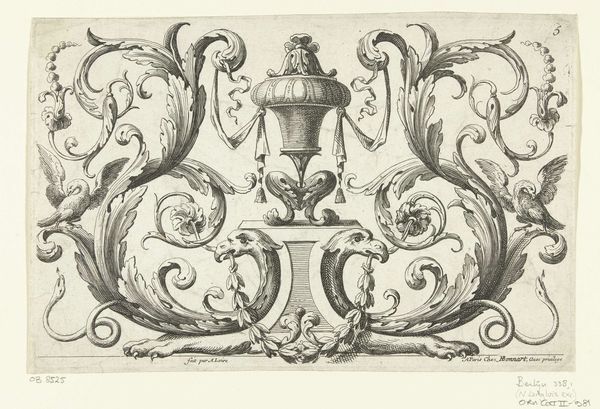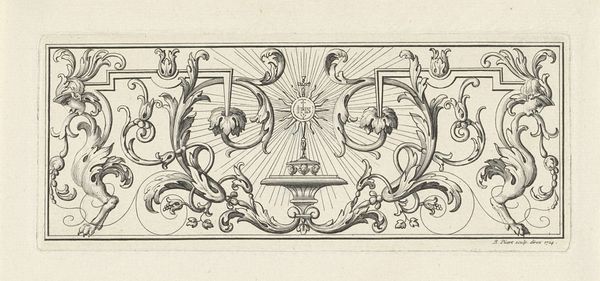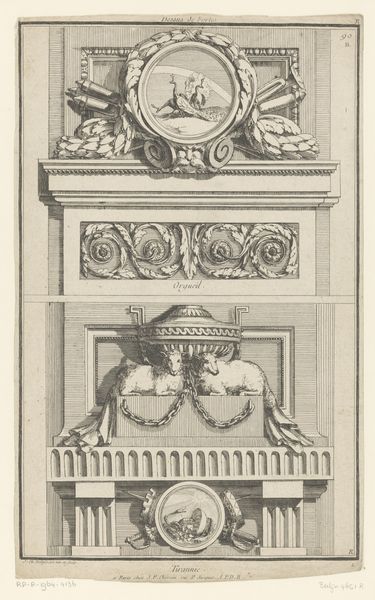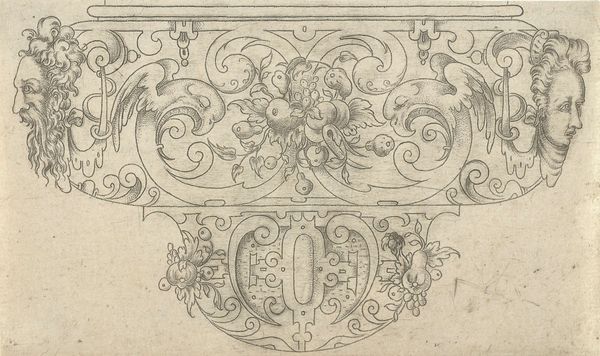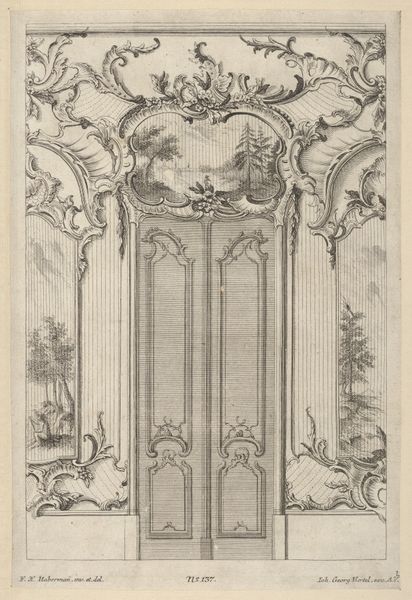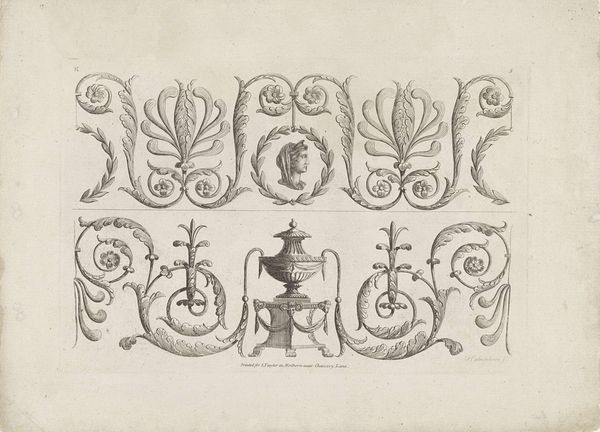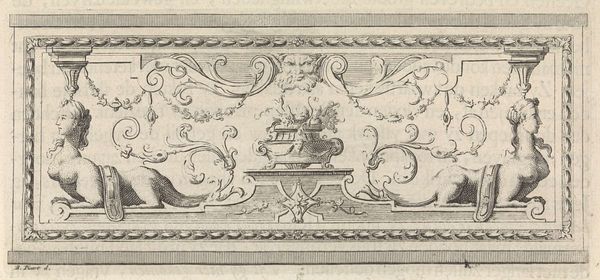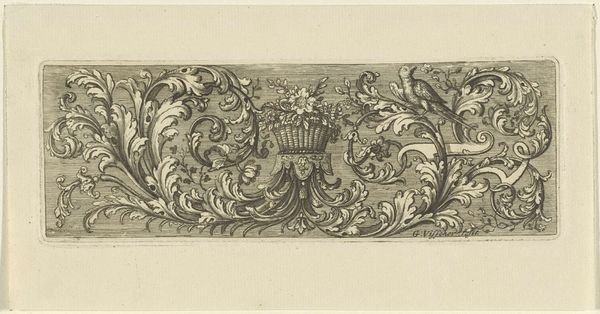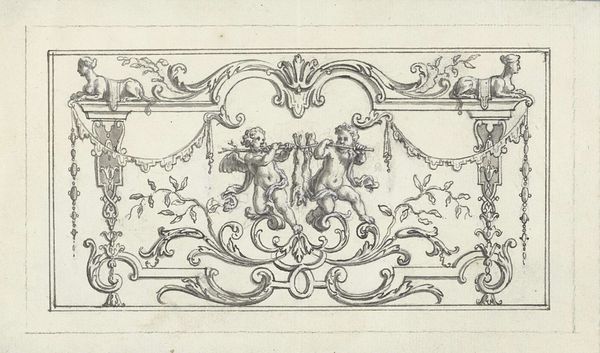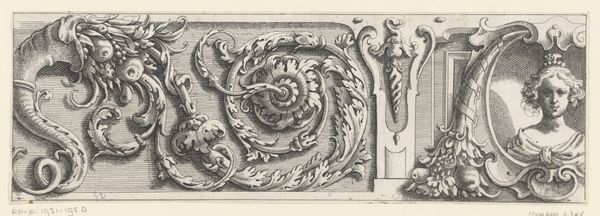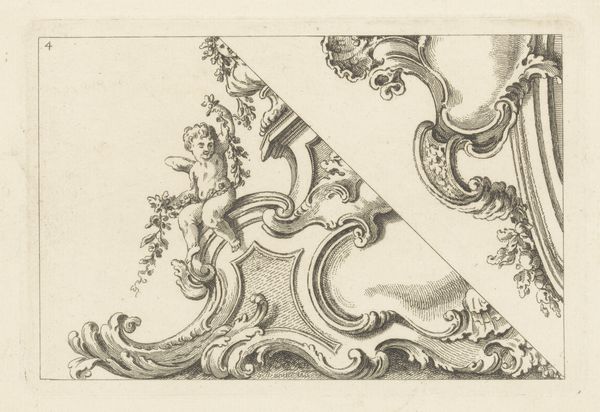
Ornament met lier en bladranken voor op gewelf in het Stadhuis op de Dam 1663
0:00
0:00
#
pencil drawn
#
aged paper
#
toned paper
#
light pencil work
#
pencil sketch
#
old engraving style
#
etching
#
pen-ink sketch
#
pen work
#
pencil work
Dimensions: height 140 mm, width 208 mm
Copyright: Rijks Museum: Open Domain
Editor: So, here we have "Ornament with Lyre and Foliage for a Vault in the Town Hall on the Dam" created in 1663 by Hubert Quellinus. It's currently held at the Rijksmuseum. The delicacy of the line work is what first caught my eye. What stands out to you? Curator: I am fascinated by its function as a preparatory drawing, an exploration of form intended for realization in a grand architectural project, the Town Hall, now the Royal Palace of Amsterdam. This begs the question: how does the drawing itself participate in the material transformation of space? Editor: So, not just a design, but also influencing material changes? How so? Curator: Precisely! Consider the cost and labour embedded in the physical execution of this ornament. Each carved detail represents a direct transfer of skilled work, shaping valuable stone into the very fabric of civic power. The materiality of the drawing - the ink, the paper - links directly to these costly realities. Don't you think the economic and political circumstances are directly interwoven with artistic and craft creation here? Editor: That's really interesting. It reframes the drawing not just as art but also a very expensive blueprint. Does the medium-- pen and ink-- tell us anything about who it was made for, or the process of its construction? Curator: Absolutely! The permanence of the ink mirrors the intended permanence of the ornament, a statement meant to endure. But beyond mere utility, the choice of pen and ink elevates the design. Editor: I see. The permanence of the materials reflects the political aspirations embedded in the architecture itself. Curator: Indeed. Analyzing the materials helps us appreciate the connection between design and material consequence, a link too often ignored.
Comments
No comments
Be the first to comment and join the conversation on the ultimate creative platform.
